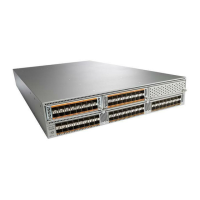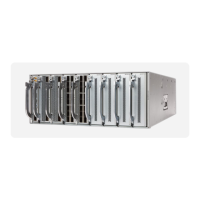PurposeCommand or Action
The session ID (configured by the span-session-number
argument) and the session type (configured by the
erspan-source keyword) cannot be changed once
entered. To change session ID or session type, use the
no version of the command to remove the session and
then recreate the session through the command with a
new session ID or a new session type.
(Optional)
Describes the ERSPAN source session.
description erspan_session_description
Example:
switch(config-erspan-src)#
description source1
Step 3
The erspan_session_description argument can be up to
32 characters and cannot contain special characters or
spaces.
Associates the ERSPAN source session number with
the source ports (1-255).
source interface { ethernet slot/chassis
number | portchannel number }
Example:
switch(config-erspan-src)# source
interface eth 1/1
Step 4
Associates the ERSPAN source session number with
the VLANs (1-4096).
source vlan number
Example:
switch(config-erspan-src)# source
vlan 1
Step 5
Specifies the VSAN ID number. The range is 1 to 4093.
source vsan number
Step 6
Example:
switch(config-erspan-src)# source
vsan 1
Configures the destination IP address in the ERSPAN
session. Only one destination IP address is supported
per ERSPAN source session.
destination ip ip-address
Example:
switch(config-erspan-src)#
destination ip 192.0.2.2
Step 7
Configures the flow ID to identify the ERSPAN flow.
The range is from 1 to 1023.
erspan-id flow-id
Example:
switch(config-erspan-src)#
erspan-id 5
Step 8
Configures the VRF to use instead of the global routing
table. You can use a VRF that you have specifically
configured or the default VRF.
vrf {vrf-name | default }
Example:
switch(config-erspan-src)# vrf
default
Step 9
Cisco Nexus 5600 Series NX-OS System Management Configuration Guide, Release 7.x
202 OL-31641-01
Configuring ERSPAN
Configuring an ERSPAN Source Session

